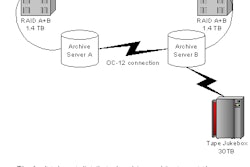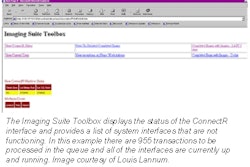SALT LAKE CITY - The future of computer applications in radiology lies in their integration into an electronic medical record (EMR) system. Good EMR systems can result from many small steps taken over the years, or can be implemented all at once as part of a comprehensive plan to create a paperless practice.
Three presenters at the closing ceremony of the Symposium for Computer Applications in Radiology (SCAR) on Sunday shared their successes and setbacks with implementing EMR systems.
Open-source EMR?
Dr. Clement McDonald, director of the Regenstrief Institute and distinguished professor of radiology at the Indiana School of Medicine in Indianapolis first implemented an EMR system at his facility in 1972.
In the intervening 29 years, 3 million patients have passed through the system, resulting in 300 million coded results, 5.5 million dictated reports, and 8.7 million radiologic images in storage. McDonald’s EMR system has been implemented on an "as-needed" basis, with most of the applications coded in-house.
McDonald noted that consistent data input is the biggest problem still to be overcome in the system. This is because users tend to work with the user interfaces of the EMR in ways that are not always compatible with clean data collection. For instance, many physicians input "notes" in a "comments" field and vice versa, he said.
Paper is still in use in the Indiana facility because, according to McDonald, "it is lightweight, easily transportable, and has an incredibly long battery life." His team is experimenting with implementing wireless connectivity in the facility using Windows CE-based devices in an effort to reduce dependence on paper.
In response to an inquiry from the audience, McDonald said he doesn't believe that turnkey EMR systems will be available anytime soon unless the medical informatics community sets standards. To support the process, McDonald said that his group is developing an open-source kernel of the EMR system so that others can build freely on the completed work.
Way out West
Paul Clayton, Ph.D., professor of medical informatics at the University of Utah in Salt Lake City and chief medical information officer of Intermountain Healthcare, has had a hand in developing and maintaining the EMR at Intermountain Health Care over the past 30 years.
Clayton originally joined the organization in 1971 as a programmer working on the first EMR implementation. The group is currently responsible for 400,000 covered individuals, 22 hospitals, and 2,500 beds in several states in the western U.S.
Clayton said that his EMR system houses more than 4 million electronically input patient records and 750,000 radiological exams. Intermountain has 600 users with access to the data warehouse via passwords, and these users initiate approximately 300,000 queries per month.
Although the interface to the system is primarily Web-based, there are 63 separate user interfaces to the EMR. That's because each department has unique reporting needs, according to Clayton.
He said Intermountain no longer finds it cost-effective to develop applications for its EMR system. Thus, the company is seeking to implement both wireless and physician order entry systems from third-party vendors.
Single-source success
Dr. John Mentel, chairman of the department of applied informatics and a general internist at the Mayo Clinic in Jacksonville, FL, took a different path to implementing an EMR at his facility. Mentel and his team chose not to implement an EMR in a piecemeal fashion, but rather reorganized the entire 400-acre campus into a completely paperless entity.
Mentel said the decision to perform a wholesale automation of all records at the institution was the result of five factors:
- The growing complexity of healthcare
- Cost savings
- Quality improvement
- Automation of competing institutions
- Empowered patients (via the Internet)
The Mayo team did not want to risk Balkanization of the system by allowing each department to set its own input standards, so it turned to a single-source vendor to design, implement, and maintain the EMR through a single data repository. With one vendor providing a single point of support, integration and downtime are "pretty much non-issues in the facility," Mentel said.
He has stuck to his commitment of creating a paperless institution -- going as far as to physically remove all printers from the facility two years ago. The move had been announced two years earlier. Today, although paper records are still generated as a result of some tests, these are immediately scanned and entered into the system.
The system has 42 million results and 5.5 million documents in its database, Mentel said. Users of the EMR access these records at a rate of 20,000 per day.
"If you’re considering implementing an EMR system, our experience is that it is most successful at an institutional level," he said. "Departments, by their very nature, are used to fighting for budget dollars. If you let them create and maintain their own data repositories, you will simply end up with more turf wars."
By Jonathan S. Batchelor
AuntMinnie.com staff writer
May 6, 2001
To view the rest of AuntMinnie's coverage of the SCAR meeting, just go to our RADCast@SCAR 2001 at http://scar.auntminnie.com.
Click here to post your comments about this story in our PACS Digital Community. Please include the headline of the article in your message.
Copyright © 2001 AuntMinnie.com



















